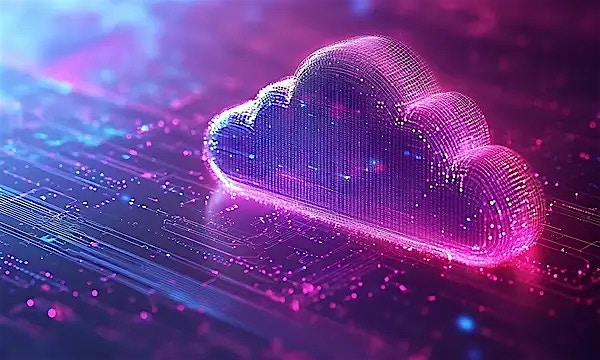Market watchers report that hyperscalers are seeing a slowdown in cloud consumption—the good news is that cloud adoption is on the rise. Businesses are now pressing the gas pedal on adopting the cloud to achieve their strategic business objectives.
According to Siki Giunta, Executive Vice President, CloudSMART Offerings Strategy, Industry Cloud Consulting at HCLTech, this represents a significant shift in the cloud market.
“In short, legacy is dragging the consumption of cloud. Legacy transformation requires a more complex architecture and there are greater restrictions, especially when it comes to things like compliance and security. Today, organizations are focusing on the capabilities and applications already in the cloud, which has created a bit of slowdown in consumption,” says Giunta.
The easy work of quickly moving excess workloads to the cloud for the purpose of saving money or improving efficiencies is done—what she calls the “go, go, go of cloud consumption”.
“The easy things to modernize have been completed and now the modernization journey is harder,” says Giunta.
The hard work of implementing transformative business decisions that lead to the evolution of an organizations’ business models is here, and this requires cloud adoption. It’s the only platform that can accommodate the changes, the speed and agility needed to drive continuous modernization and transformation outcomes. The impact of the cloud is like the impact of the internet for business at scale and “as of today, there isn't any other type of technology that can support the evolution of innovation”.
To maximize transformative business objectives in the cloud and move away from legacy, organizations must rely on systems integrators to make the cloud work, by filling the experience gap.
Giunta adds: “You can’t have transformation without system modernization. But if end user organizations work together with systems integrators to do the hard work of decoupling systems [legacy from modernized] to modernize those that you can and rewrite those that you can’t, you will maximize capability.”
Making the cloud work
Traditionally, hyperscalers offered organizations a choice when it came to the cloud; public, private and most recently, multi and hybrid. But, in this last chapter of cloud, businesses really have to know how and why they are choosing cloud—have a plan for utilization.
Taking advantage of what the cloud can do requires an “understanding of the systems, business capability, architecture, knowledge of security, compliance, data residency and more,” says Giunta.
“The hyperscalers made it simple to “move” to the cloud, without realizing, as an example, how to move the data to the cloud with the applications to drive transformative business outcomes,” she adds.
This challenge has been compounded by the talent shortage.
Globally, there is a shortage of skilled employees who have experience in the cloud and understand all the challenges of different cloud implementations and how they should turn out. This is what makes the hard work of transformation in the cloud most difficult. System integrators fill this experience gap, and this is what HCLTech brings to the table—the “been there done that” knowledge when it comes to the cloud.
"There isn't enough talent with the experience of doing large scale cloud implementations. Everyone is going after the same people, because the growing demographic of born-in-the-cloud talent is only now just coming out of universities and schools. They come with the skills, but don’t have the experience,” explains Giunta.
As an organization, when you know everything that can go wrong you can implement the processes and the tools to ensure bad things don’t happen. The system integrators are the insurance policy for having positive outcomes when businesses are adopting new processes and programs to transform their business and innovate.
Systems integrators, like HCLTech, make the cloud work.
Giunta confirms: “Increasingly, cloud providers will rely on systems integrators to be their partner so that organizations can consume the capacity they’ve sold.”
She adds: “In the long run, the cloud is born neutral. It’s born to run on anything that you give it. But we know that not every cloud is equal for every application, and every industry. That connectivity is created by the systems integrators that take the time to understand what is best.”
The cloud makes things possible
The cloud presents numerous use cases that can drive change and positively impact society, business and the individual.
In North America in 2023, there have been over a dozen trail derailments. One of these, the Ohio trail derailment on February 3rd, resulted in the release of hazardous materials that could have severe implications for the surrounding environment. Residents have complained of feeling sick and the vinyl chloride the train was carrying has made its way into the air, water and soil.
To reduce the number of these disasters, rail companies can use the cloud and supporting technologies to monitor and intercept data that can be analyzed to prevent a derailment. Railroads and the National Transportation Safety Board in the US should mandate this technology to prevent these disasters.
Giunta explains: “As more of these trains derail, I'm realizing, listening and understanding that their telemetry is so archaic. Minutes pass before the railway operators know where the train is or what's going on. These trains are derailing all the time, because the track is overheating. By implementing edge devices supported in the cloud, operators could have near real-time insights into the train and the track to prevent and reduce derailments.”
She also refers to the pharma industry that could use the cloud to conduct more extensive clinical trials in a shorter period of time. In this environment, the data can be analyzed to make life changing decisions on formulating medicines.
In these examples, the cloud makes these things possible. “When you implement [these use cases] and they happen, it’s beautiful,” says Giunta.






